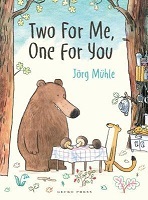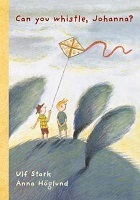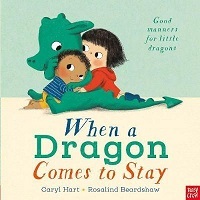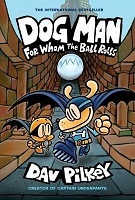By Bernice Williams, Ngaio School librarian
“Do you have any books about uniforms? I really like uniforms.”
“Do you have any books with a cat in them? I’m looking for a book with a cat named Ronald.”
“Look! There’s a wet patch on the carpet where Tom was sitting.”
“Can you help me find the book I was looking at last week? It had a dragon in it.”
“My tooth just came out!”
As a primary school librarian, you need to be prepared for everything, especially the unexpected. And you have to be very patient and flexible. It is difficult to describe a typical day, as no two days are the same, although there are always the staple ingredients of children and books.
Here’s how I spent my six hours of employment on a typical Wednesday before the lockdown.
8:45 a.m. Check pigeonhole and whiteboard for events/activities that may affect the library, e.g. a planned fire drill. The pigeonhole contains a parcel—a book order has arrived.
8:50 a.m. Start computers, check electronic message board and emails. An author visit has been cancelled. Notify the teachers and feel grateful I had not begun the RAMS (Risk Assessment and Management) forms and parent/caregiver permissions for the trip.
9 a.m. Check library software for notification of new pupils or pupils who have left, print new class barcode lists and add these to our master file. Two pupils have left the school with books still on loan: to follow up.
9:10 a.m. Send out the updated Library Monitor job application form—when these come back, I will set up an information and training session for prospective Library Monitors, then compile a timetable for lunchtime duties.
9:20 a.m. Weekly software back-up.
9:30 a.m. Process a batch of new books via our software system and SCIS cataloguing. Scanning a book’s barcode and having all its cataloguing data arrive almost instantly on screen is magic for those of us who used to add books manually to our collections.
 10:00 a.m. Break partway through as my first class arrives. It is a delightful Year 2 class and we spend the first few minutes catching up on news. The children have just come from swimming and are eager to tell me who can float, do a starfish on their front, put their head underwater. I show them the New Books shelf, highlighting one or two I think will be popular. They browse the shelves, select and issue their two books to take home for the week. Then we meet up again for a story. Today’s story, Two for Me, One for You by Jörg Mühle, leaves us to imagine what happens next. Several children have ideas and one boy announces, “It’s actually a cliffhanger.”
10:00 a.m. Break partway through as my first class arrives. It is a delightful Year 2 class and we spend the first few minutes catching up on news. The children have just come from swimming and are eager to tell me who can float, do a starfish on their front, put their head underwater. I show them the New Books shelf, highlighting one or two I think will be popular. They browse the shelves, select and issue their two books to take home for the week. Then we meet up again for a story. Today’s story, Two for Me, One for You by Jörg Mühle, leaves us to imagine what happens next. Several children have ideas and one boy announces, “It’s actually a cliffhanger.”
 Reading aloud to the children is without question my favourite part of this role. I have had so many ‘moments of gold’. I particularly love the time-lapse at the end of the story—a sure sign that reading magic has taken place. The children have been so absorbed, so engaged, they appear momentarily stunned, as if they are shifting between worlds. They sometimes break into applause. Then their reactions come pouring out. After Ulf Stark’s Can You Whistle, Johanna?: “That was a beautiful story.” “Yes, but it was so sad.” “It was happy and sad at the same time.” “Can a book be both?” “I loved how that boy persevered.” After Christmas in the Bush by Lindy Kelly: “I wish I could be the boy in that book.”
Reading aloud to the children is without question my favourite part of this role. I have had so many ‘moments of gold’. I particularly love the time-lapse at the end of the story—a sure sign that reading magic has taken place. The children have been so absorbed, so engaged, they appear momentarily stunned, as if they are shifting between worlds. They sometimes break into applause. Then their reactions come pouring out. After Ulf Stark’s Can You Whistle, Johanna?: “That was a beautiful story.” “Yes, but it was so sad.” “It was happy and sad at the same time.” “Can a book be both?” “I loved how that boy persevered.” After Christmas in the Bush by Lindy Kelly: “I wish I could be the boy in that book.”
10:45 a.m. The children return to their classroom and I go for a cup of coffee. The role of school librarian can be solitary, so I make an effort to get to the staffroom for morning tea break, as I don’t have the opportunity to do so at lunchtime.
 11:00 a.m. Three back-to-back Year 1 class sessions. It is a quick turnaround, but I make sure each class has a story and time to discuss it. I choose When a Dragon Comes to Stay (Good Manners for Little Dragons) by Caryl Hart, asking who has had a friend or cousin to stay over at their house before. There are lots of responses. As I read, we discuss some vocabulary – “What would it look like to eat daintily?” The children tell me their favourite page or illustration, and we think about what bedtime story we would read to a dragon.
11:00 a.m. Three back-to-back Year 1 class sessions. It is a quick turnaround, but I make sure each class has a story and time to discuss it. I choose When a Dragon Comes to Stay (Good Manners for Little Dragons) by Caryl Hart, asking who has had a friend or cousin to stay over at their house before. There are lots of responses. As I read, we discuss some vocabulary – “What would it look like to eat daintily?” The children tell me their favourite page or illustration, and we think about what bedtime story we would read to a dragon.
12:30 p.m. A fifteen-minute hiatus to shelve as many of the returned books as I can, have a quick bite of lunch, and prepare for the influx.
12:45 p.m. The library fills up with readers, makers, illustrators, paper-plane creators, card traders, club collaborators, and book exchangers. The library at lunchtime is a space for individuals to be themselves, no classroom rules or tasks to complete, no access restrictions; it is everybody’s place. I see a child curled up in an armchair, tucked into a corner, and another lying full length under a table, oblivious to the bustle and noise. This is a safe place for children who find the playground at lunchtime daunting, and the place where children feel comfortable asking questions, revealing concerns, talking about home-based events that are causing worry (a new sibling, a parents’ separation, grandparents coming to stay). No matter the weather there are always customers—children—in the library at lunchtime.
1:30 p.m. After a tidy-up, I return to the batch of new books I began processing in the morning. I print barcodes and spine labels and place them on the thirty newly processed books, then put them aside to be covered, taped and stamped. I also make replacement labels for several books: a damaged barcode, a picture book incorrectly labelled, a non-fiction book that I feel will circulate better if it were classified as fiction.
 2:40 p.m. After an attempt to delete a batch of long-lost books from our collection records, I lodge a request with the helpdesk.
2:40 p.m. After an attempt to delete a batch of long-lost books from our collection records, I lodge a request with the helpdesk.
2:50 p.m. Doing some final shelving, I come across a book that a pupil had been searching for earlier in the day: Dav Pilkey’s Dog Man 7: For Whom the Ball Rolls. Like all of the Dog Man series, this one is hot property. I issue it and deliver it to the classroom for the happy recipient.
Bernice Williams is a library assistant at Ngaio School in Wellington. In 2018, she was the recipient of an Absolutely Positive Wellingtonian Award for her work on community organisations, such as the National Council of Women and the Wellington Playcentre Association, as well as her support of representative-level basketball in New Zealand.

